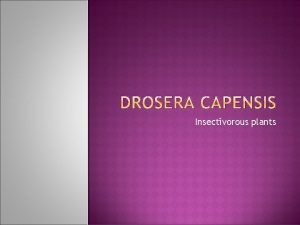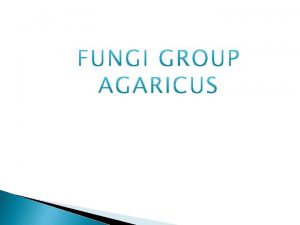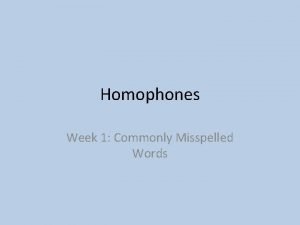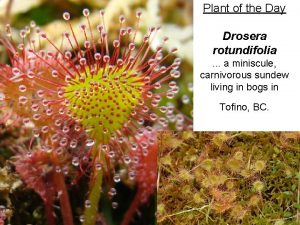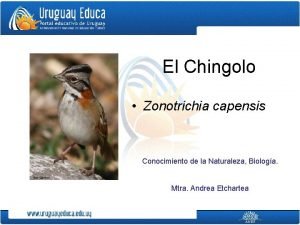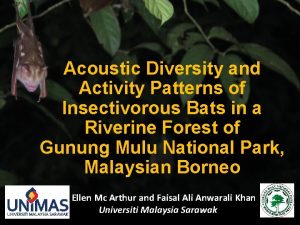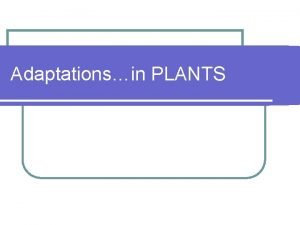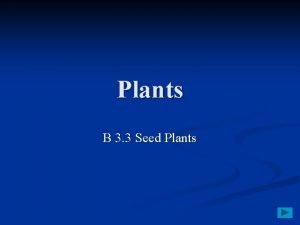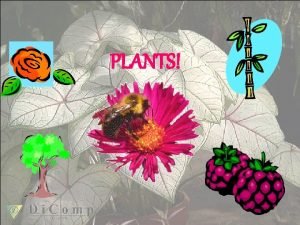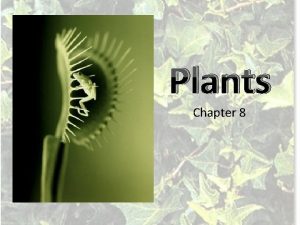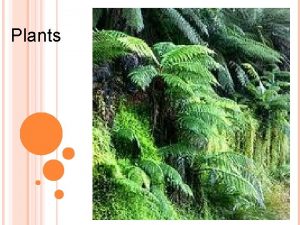Insectivorous plants Drosera capensis commonly known as the















- Slides: 15

Insectivorous plants

• Drosera capensis, commonly known as the Cape sundew, is a small rosetteforming carnivorous species of perennial sundew native to the cape in South Africa. . Because of its size, easy to grow nature, and the copious amounts of seed it produces, it has become one of the most common sundews in cultivation

• Drosera capensis is one of the hardiest carnivorous plants to grow. It tolerates a variety of soils which low in nutrients. • General growth media, 1 part sand or silica grit: 1 peat or sphagnum moss in 10 -15 cm pots are ideal

• Drosera capensis grow in most sizes of pots. I'd recommend 4 inches or taller, since Drosera capensis can develop a long, branching root system • A tall pot will allow the roots to spread out, so the plant can reach its maximum height.

• Drosera capensis generally produces hundreds of seeds on its own. With most varieties, they will readily self-pollinate. • Once, when fed often, my 'Typical' and 'Albino' forms have produced huge flower stalks, which created around 1000 -2000 seeds per stalk

• In early summer or late spring, D. capensis produces multiple, small, five-petaled pink flowers at the end of scapes which can be up to 30 cm tall. • Flowers individually open in the morning and close by mid afternoon, lasting just one day each with the next one up the scape opening the following day

• Drosera capensis has several forms or varieties, including the "typical", "wideleaved", "narrow-leaved" and "red" forms and the cultivar Drosera 'Albino' • The typical form is noted for wider leaves and the gradual production of a scrambling stem as it grows.

• Drosera capensis uses its sticky tentacles to attract and catch flies and other insects. • Contact triggers a curling reaction, where the plant wraps up its prey and eventually digests and absorbs the victim's nutrients. .

• Drosera capensis need full sun to light shade, with an acidic, moist soil mix. In the greenhouse, we use a soil mix consisting of 2 parts peat moss to 1 part • Sand. • In a terrarium, you will need to add at least 1 inch (2. 5 cm) of horticultural charcoal before adding the soil mix. If grown in containers,

• In the greenhouse, plants bloom in the fall with scapes that have numerous small pinkish flowers up to 3/8 of an inch (1 cm) long. • The flowers are self-pollinating, and when seedpods dry they produce hundreds of viable seed.

• The leaves radiate from the stem and are made up of a petiole and lamina, the petiole being almost the same length as the lamina. The lamina is flattened and bears knobshaped tentacles, which are stalked, mucilaginous glands covering the leaf surface.

• Flowers are open very briefly for a few hours with good sunlight. The flowers can be pollinated by insects, but are usually self-pollinated. • When the seeds are ripe, their capsules open to release the fine, light-weight seeds which fall out and are dispersed near the parent plants.

WWW. PLANT OF THE


 Drosera capensis varieties
Drosera capensis varieties Bee anatomy
Bee anatomy Types of optical storage
Types of optical storage Agaricus is commonly known as ......
Agaricus is commonly known as ...... Vascular vs nonvascular plants
Vascular vs nonvascular plants Characteristics of non flowering plants
Characteristics of non flowering plants C3 plant
C3 plant Nonvascular plants
Nonvascular plants Guanidine hydroxide
Guanidine hydroxide Hodgepodge jeopardy
Hodgepodge jeopardy Collection of web page
Collection of web page Virtual memory is commonly implemented by
Virtual memory is commonly implemented by Homophones of week
Homophones of week Section 17-3 note taking guide answer key
Section 17-3 note taking guide answer key Describe how sheet metal is used in pattern development.
Describe how sheet metal is used in pattern development. Commonly confused words paragraph
Commonly confused words paragraph
